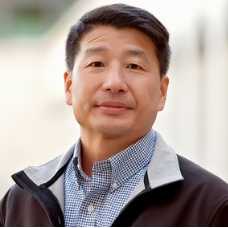Cardiovascular Tissue Engineering
A special issue of Journal of Cardiovascular Development and Disease (ISSN 2308-3425). This special issue belongs to the section "Basic and Translational Cardiovascular Research".
Deadline for manuscript submissions: closed (31 August 2022) | Viewed by 32520
Special Issue Editors
Interests: cardiac progenitor cell; cardiac development; transcriptional regulation; Nkx2-5; myocardial regeneration; induced pluripotent stem cell
Special Issues, Collections and Topics in MDPI journals
Interests: cardiovascular tissue engineering; 3D bioprinting; nano-biomaterials
Special Issues, Collections and Topics in MDPI journals
Special Issue Information
Dear Colleagues,
This Special Issue of JCDD is focused on “Cardiovascular Tissue Engineering”, encompassing the variety of biomaterial, cellular, and hybrid mechanisms of engineering cardiovascular tissue constructs for in vitro disease modeling and drug screening, as well as in vivo regenerative applications. Cardiovascular tissue engineering has emerged and evolved as one of the most promising fields of cardiovascular research, at the intersection of scientific fields in biology, physical and materials sciences, and bioengineering. Functional biomaterial systems are designed and fabricated, using a variety of advanced tissue manufacturing methods to recpaitulate the native cardiac tissue extracellualr matrix. These cardiac biomaterials influence the behavior of cells through a complex array of physiomechanical and biohemical cues. The geometry, dimensions, and chemistry of cardiac scaffolds affect processes such as cell attachment, proliferation, differentiation, and function. As cardiac and vascular cells flourish in artificial bioengineered environments, they may transform into functional tissues with translational values.
In this Special Issue, we aim to capture state-of-the-art research and review articles focusing on advanced cellular and biomaterial-based approaches of cardiovascular tissue engineering. In particular, we seek novel studies on the development of tissue biomanufacturing methods to create cardiovascular tissue mimics, advanced biomaterial systems designed to model cardiac tissues, and stem cell-based approaches. Applications are not limited to, but include, cardiac patch systems for in vivo tissue regeneration and tissue analogues for in vitro disease modeling and/or drug screening
Prof. Dr. Sean M. Wu
Dr. Vahid Serpooshan
Guest Editors
Manuscript Submission Information
Manuscripts should be submitted online at www.mdpi.com by registering and logging in to this website. Once you are registered, click here to go to the submission form. Manuscripts can be submitted until the deadline. All submissions that pass pre-check are peer-reviewed. Accepted papers will be published continuously in the journal (as soon as accepted) and will be listed together on the special issue website. Research articles, review articles as well as short communications are invited. For planned papers, a title and short abstract (about 100 words) can be sent to the Editorial Office for announcement on this website.
Submitted manuscripts should not have been published previously, nor be under consideration for publication elsewhere (except conference proceedings papers). All manuscripts are thoroughly refereed through a single-blind peer-review process. A guide for authors and other relevant information for submission of manuscripts is available on the Instructions for Authors page. Journal of Cardiovascular Development and Disease is an international peer-reviewed open access monthly journal published by MDPI.
Please visit the Instructions for Authors page before submitting a manuscript. The Article Processing Charge (APC) for publication in this open access journal is 2700 CHF (Swiss Francs). Submitted papers should be well formatted and use good English. Authors may use MDPI's English editing service prior to publication or during author revisions.
Keywords
- Cardiac regeneration
- Cardiac patch devices
- Cardiovascular disease modeling and drug screening
- Cardiac tissue bioprinting
- In vitro cardiac tissue mimics
- Cardiac cell therapies







